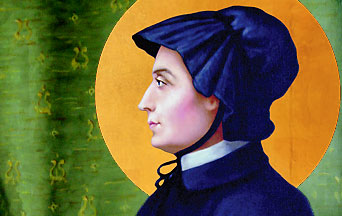
May the most just, the most high and most amiable will of God be in all things fulfilled, praised and exalted above all forever. –Pope Pius VII
On the fourth of January 1821, Elizabeth Ann Seton breathed her last breath. Her favorite prayer, quoted above, was ever on her lips as she lay dying at the age of forty-six. In a last heroic effort, she whispered the name Jesus as she entered into eternity.1
“Be true children of the Church!” This was her final exhortation to the Sisters of Charity of Saint Joseph, the religious order that she founded, and family members gathered at her bedside. It will always be good advice for her brother and sister Americans and people all over the world.
At first, the Church in the United States of America was small. Mother Seton had exhausted her last bit of strength to help lay the foundations. From her first entrance into the one and only Church built by Christ until she drew her dying breath, Elizabeth Ann Seton had one mission in mind: to see God’s glory manifest in America.
Let us look at the life of the first American whom Holy Mother Church acclaimed a citizen of Heaven.
Growing Up With the New Nation
Elizabeth Ann Bayley was born the twenty-eighth of August 1774, just two years before the Declaration of Independence was signed. Her father, Dr. William Bayley, was a surgeon in the British army. After the war ended, he was the first American doctor to make house calls. Her mother, Catherine Charlton Bayley, was related to several of the elite New York families, including the famous Roosevelts.2
From her earliest days, Elizabeth faced many sufferings, yet she lived a life of love and holy joy. When Elizabeth was just three years old, her mother passed away, and a short time later, her sister Catherine died. After her sister Catherine passed away, Elizabeth said, “Kitty has gone to Heaven, how I wish I could go with her too.”3
In keeping with the times, Elizabeth’s father gave her a very feminine education. She was taught literature, French, music, drawing, dancing, sewing, and housekeeping. While still young, she began keeping a diary and sending letters, a practice she maintained until her final years.
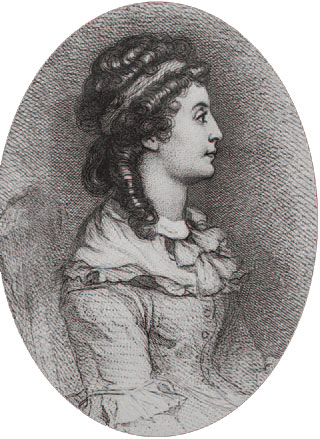
the first American-born saint.
Early on, Elizabeth’s young mind was drawn to the things of God. Baptized and raised in the Episcopal Church, she would spend long hours contemplating sacred scripture and writing about Heaven.
The Conversion of Alphonse Ratisbonne
When Elizabeth came of age, she was among the most beautiful young ladies of New York society, and many men vied for her hand in marriage. William Magee Seton, a merchant from a prominent family, won her affections. Due to business obligations, William made frequent trips to trading partners in Livorno, Italy, where Elizabeth’s faith eventually increased.
William and Elizabeth married in 1794, and in the following years God blessed them with five children: Anna, William Jr., Richard, Catherine, and Rebecca.
Motherhood and housekeeping soon consumed Elizabeth from morning until night. She cared for her beloved husband during his bouts with tuberculosis, and had to manage his business affairs. Amid all of that, somehow Elizabeth also made herself available as the faithful friend and confidant to growing numbers of New Yorkers.
With the death of her father-in-law in 1798, William and Elizabeth had to raise his younger children. Her own father passed away in 1801, which impacted her greatly because economic downturn and foreign wars reduced the family fortunes. Nevertheless, undaunted by these hardships, Elizabeth wrote: “At all events this life is worth possessing only because, while we have it, we are candidates for a better one.”4
So, clearly she saw life’s sufferings with a supernatural eye.
Quarantine in Italy
When William’s health didn’t improve, his doctors recommended a trip abroad for recovery in 1803. Given William’s contacts in Italy, he and Elizabeth soon arranged passage on board the Shepherdess and they took only their eldest daughter Anna. Meanwhile, family and friends in New York cared for their other children.
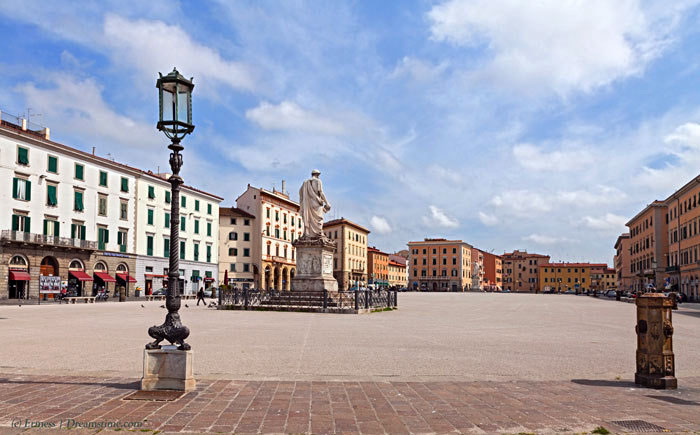
© Ermess | Dreamstime.com
Sadly, the journey to Livorno was extremely difficult. A yellow fever epidemic had broken out in New York and all passengers disembarking had to quarantine for thirty days before entering Italy. On an island offering little shelter, the Setons spent the next month in privation.
As a result, William’s health rapidly declined in the drafty seaside environment. Most of the time Elizabeth cared for him, and somehow she gave care and comfort to other passengers as well. Their Italian friends Antonio and Amabilia Filicchi, along with Antonio’s brother Philip and wife Mary Filicchi, did whatever they could to visit and send provisions. However, at the end of the Setons’ quarantine, William’s body was so wasted that he could scarcely move.
The generous Fellichis brought William, Elizabeth, and Anna to Pisa, where they spent Christmas. Two days later, William died with Elizabeth and their daughter at his side.
Light From the Altar
With the loss of her husband and her daughter Anna taken ill with scarlet fever, Elizabeth put her trust in God’s providence. The Fellichi family saw to all of her needs, and their example of Catholic charity profoundly moved her.
When they made a trip to Florence, Elizabeth noted that many Catholics knelt before the altars in churches, where they implored God for every need. The Catholic Mass was so different from the Episcopalian services she had known in New York, and she wondered whether Christ was really present in the Eucharist.5
She began to ask questions of her hosts, who answered with patience and clarity. More impressive to Elizabeth than the arguments for Catholic truth was how the Italian family who adopted her lived their devotion. Every morning the family attended Mass in their chapel, and every day they prayed the rosary.
Our Lady of the Miracle: The Happiness of Unpretentiousness, Purity, and Admiration
When Antonio Fellichi taught her to make the sign of the Cross, Elizabeth was filled with sacred awe. Contrary to what her fellow Protestants had told her, she found devotion to the Blessed Mother a sure way in growing closer to Jesus.6 In a letter to a relative, Elizabeth wrote:
“A little prayer book of Mr. Filicchi was on the table, and I opened it to a little prayer of St. Bernard to the Blessed Virgin begging her to be our Mother. I said it to her with such a certainty that God would surely refuse nothing to His Mother; that she could not help loving and pitying the poor souls He died for; that I felt I really had a mother whom you know my foolish heart so often lamented to have lost in early days.”
Before returning to America, she and her daughter visited the tomb of her husband one last time. Elizabeth knelt and prayed for his soul because Catholic practices had taken deep root in her life.
Embracing the Cross in America
After long delays, in April of 1804 Elizabeth and Anna boarded the Flamingo for their return to America, and Antonio Fellichi joined them on the journey. Upon arriving in New York, at long last she could embrace her other four children. But with her husband departed, Elizabeth needed help arranging the family’s affairs from relatives and friends.
When word spread of her interest in Catholicism, friends and strangers from almost every Protestant religion attempted to talk her out of converting. Her own Episcopalian ministers and friends gave her tracts on their alleged errors of Rome. Methodists, Anabaptists, and Presbyterians approached to convince her to join their congregations.
Antonio was ever insistent that she join the one and only Church that Christ built upon Pope Saint Peter (Matthew 16).
So Elizabeth begged God for certitude: “If I am right, Thy grace impart, still in the right to stay. If I am wrong, oh teach my heart to find the better way.”7
Going Home
At Antonio’s request, Archbishop John Carroll wrote to Elizabeth, answering objections to Catholic truth. Elizabeth was greatly consoled by his intervention, but heartbroken to leave the goodness she remembered from the Episcopalian religion of her youth.
In 1789, Pope Pius VII had named Fr. John Carroll, S.J. the first bishop in the USA, then the first archbishop of the first U.S. Diocese of Baltimore. He was a phenomenal builder of Catholic institutions in America, and so he was a great teacher to Elizabeth.
The seed of wonder about Catholic truth was growing in Elizabeth’s soul. From her letters during this time, Elizabeth wrote about Blessed Mother Mary:
“If anyone is in heaven, His Mother must be there. Are the angels, then, who are so often represented as being so interested for us on earth, more compassionate or more exalted than she is? Oh! no, no, Mary our Mother, that cannot be! So I beseech her, with the confidence and tenderness of her child, to pity us and guide us to the true faith if we are not in it.”8
Eternal and Natural Law: The Foundation of Morals and Law
The New Year of 1805 still found Elizabeth uncertain. On the sixth of January, the Feast of the Epiphany, Elizabeth opened a book of sermons by Fr. Louis Bordaloue, S.J. and had her own epiphany:
“It is necessary that our faith be tried, and how? By those abandonments and those privations so common to the souls of the just; and if we are not strong enough to say to God with the Royal Psalmist: ‘Try me, O Lord!’ we must, after the example of the Magi, be so disposed as to persevere in the midst of trials which it may please Him to send us. We must be mindful of the lights with which we have been favored when it shall please God to deprive us of them.
“‘We have seen His star!’ I no longer experience what formerly impressed me and drew me to God. But I have seen it and have known its truth and its necessity, and I have been persuaded by it…”9
When Elizabeth closed the book, her mind was made up. Nothing would stop her from converting, as she made known in a letter: “I will go peaceably and firmly to the Catholic Church: for if Faith is so important to our salvation, I will seek it where true Faith first began, seek it among those who received it from God Himself.”10
 Learn All About the Prophecies of Our Lady of Good Success About Our Times
Learn All About the Prophecies of Our Lady of Good Success About Our Times
On Ash Wednesday, she knelt in St. Peter’s Church on Barclay Street in Manhattan to make her formal abjuration of heresy. After a general confession, she received her First Holy Communion on the Feast of the Annunciation.
In her journal, Elizabeth rejoiced: “The first thought I remember was: let God arise, let His enemies be scattered—for it seemed my King had come to take His throne and instead of the humble tender welcome I had expected to give Him, it was a triumph of joy and gladness.”11
Some Doors Slammed and Others Opened
Word of Elizabeth’s conversion spread quickly in New York society. Long friendships abruptly ended. Neighbors with whom she had long associated abandoned her. Her children, quick to embrace the Catholic faith, were scorned with anti-Catholic insults.
But Elizabeth’s children didn’t shrink away. Instead, they took up their mother’s newfound Catholic faith with great enthusiasm. Through Antonio Fellichi, Elizabeth arranged to have her boys enrolled in Georgetown College.
She then began assisting Mr. and Mrs. Patrick White in running a school in New York City. After just three months, however, the school closed because Protestants refused to let the notorious convert Mrs. Seton teach their children.
When this failed, others arranged for her to board students attending another school run by a Mr. William Harris. The arrangement lasted three years.
Her devoted sister-in-law, fifteen year old Cecilia Seton, was stung by an acute illness and insisted on Elizabeth’s continual presence and support. Upon Cecilia’s recovery, she told her family that she decided to become Catholic. Despite their strong objections, Cecilia formally entered the Church on the twentieth of June 1807. Cecilia joined Elizabeth in the Seton household until the unrest over her conversion died down.
Faced with opposition and hostility, Elizabeth knew she had to leave New York. At the invitation of Archbishop Carroll, she made arrangements to travel to Baltimore to start a school for girls. On the ninth of June 1808, Elizabeth Ann Seton and her family left, never to return.
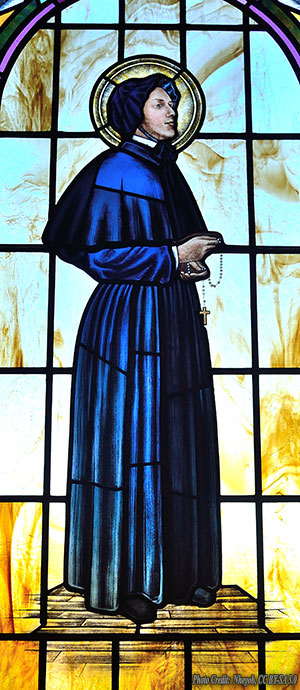
Photo Credit: Nheyob, CC BY-SA 3.0
Sisters of Charity
Father Louis William DuBourg, S.S. was president of Saint Mary’s Seminary in Baltimore. He had corresponded with Elizabeth, and welcomed the Seton family. He secured them a rental house on Paca Street where the school for girls soon opened.
Filled in the first year, Elizabeth soon had young women asking to join her in the work, and Archbishop Carroll made plans to unite the small group of women in a religious community. He served as witness to their simple vows of binding for a year, and thus named Elizabeth directress of the budding order. So, from then on, she was called Mother Seton.
The school work continued and grew. Soon Cecilia Seton and her sister Harriet arrived and joined as postulants. The new order quickly outgrew the house on Paca Street. At that time, Samuel Cooper, a wealthy convert from Virginia was entering a seminary to become a priest and he bought Mother Seton a property in Emmitsburg, fifty miles northwest of Baltimore.
Despite Cooper’s generosity, the first year in Emmitsburg was one continual Calvary for the Sisters. Their sparse hovel with dirt floors provided little relief from winter’s cold.
Then 1810 brought needed relief with a large log house for their use. On the twenty-second of February, the new school opened with girls enrolled.
At Emmitsburg, plans for the new order were finalized. They would adopt the rule of the Sisters of Charity founded by Saint Vincent de Paul. (Mother Seton hoped they would one day have formal ties, and the order achieved it in1850.) The Sisters of Charity at Emmitsburg took Saint Joseph as their patron because Mother entrusted the daily needs of the whole community to the Head of the Holy Family.12
Mother Embraced the Cross
The Cross was at the center of Mother Seton’s life at Emmitsburg. As Christ commands us in Luke 9:23, she and her children took up their crosses daily without complaint.
Her eldest daughter Anna, then a novice, suffered immensely in the winter of 1811. She continued her tasks with heroic zeal, until she could no longer hide the fatal signs of tuberculosis. On the thirtieth January 1812, she was given last rites. The next day she was received as a fully professed sister, fulfilling her heartfelt desire of dying as a Sister of Charity. On the twelfth of March, she passed into eternity.
The following winter, her sister Rebecca was crippled by a fall. Her health drastically broke down over the next four years, until on the third of November 1816, Rebecca gave up her soul to God at the young age of fourteen.
With the loss of these two daughters, Mother Seton’s longings for Heaven only increased.
Her daily tasks multiplied with the growth of the order, taxing her strength and her health. Fevers and illness confined her to bed for weeks at a time.
Despite suffering and isolation, Mother Seton continued to write and receive letters. Her interest in every aspect of the Church in America kept her in contact with Catholics throughout the country. She also kept in touch with non-Catholic friends, guiding them as she knew best to follow her into the Church. And thus her own sufferings united her ever closer to Christ Crucified.
Learn All About Sr. Mariana de Jesus Torres
With gratitude, she wrote: “O Lord Jesus, how great is the merit of the blood which redeems the whole world—and would redeem a million more—and would redeem the demons themselves were they capable of penitence and salvation as I am—Yes, Lord, though your thunders should crush me and a deluge overwhelm me I will hope that while you destroy my body you will save my soul.”13
By 1820, tuberculosis was taking its toll like it had taxed so many others in her family. Placed in a small room adjacent to the convent chapel, Mother Seton remarked, “I try to make my very breathing a thanksgiving.”14
Through the fall of that year, she gained improvement, only to relapse. Through it all, Mother continually lived the virtues of the sick: meekness, patience, resignation, and gratitude for every help received.15
Father Gabriel Bruté, her French confessor and confidante, visited often to administer the sacraments. After giving her Viaticum, he wrote: “Will I ever forget that face, fired with love, melted in tears at His approach in Communion? To the last, exhausted death on that face, as He came—it was still inflamed, and blushed in ardent love, desire inexpressible of eternal union in Him.”16
After Christmas, Mother Seton’s death was obviously and painfully near. Her petite body was reduced to almost a skeleton. With her remaining strength, she gave final counsel to her Sisters: “Be true children of the Church! Be true children of the Church!”17
In the early morning hours on the fourth of January 1821, everyone at her at bedside heard her final word: “Jesus!”
The Sisters Blessed America Far and Wide
With Mother Seton’s passing, the work of the Sisters of Charity multiplied.
Foundations grew and spread to all corners of the Republic. In 1850, the dream of Mother Seton was realized when the Sisters in America joined the congregation of the Sisters of Charity of St. Vincent de Paul.
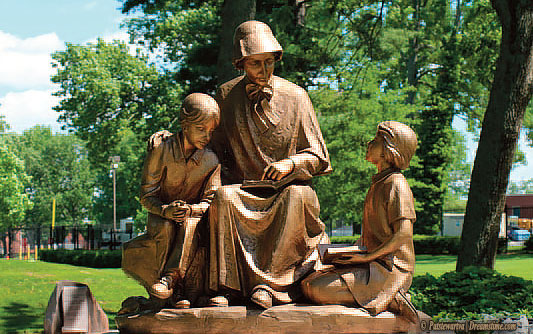
© Patstewartva | Dreamstime.com
In addition to their work as parochial school foundresses, the sisters became pioneers in Catholic health care.
When the American Civil War broke out, Mother Seton’s spiritual daughters ministered to wounded on both sides, and they were nicknamed Angels of the Battlefield.18
Science Confirms: Angels Took the House of Our Lady of Nazareth to Loreto
One of the most noticeable effects of the Sisters’ work for God’s glory was the change that came over American society. Anti-Catholic bigotry slowly gave way to great numbers embracing the true faith. Schools and hospitals operated by the Sisters achieved a high reputation even among non-Catholics. Lies about Christ’s Church could not compete with the example of Mother Seton’s spiritual daughters.19
With the growth of the Sisters of Charity, Mother Seton’s memory never faded.
Throughout the twentieth century, the renown of the Sisters of Charity helped to spread devotion to their beloved Mother. On the seventeenth of March 1963, she was beatified by Pope Saint John XXIII. Showing her concern from Heaven for her fellow Americans, miracles due to her intercession were soon reported. With Vatican recognition of three miraculous cures of desperately ill individuals, the time had come at last.
On the fourteenth of September 1975, Pope Saint Paul VI proclaimed Elizabeth Ann Seton a saint. In fact, he exclaimed it: “Yes, Venerable Brothers and beloved sons and daughters! Elizabeth Ann Seton is a Saint!”20 Furthermore, the Holy Father canonized Mother Seton on the Feast of the Exaltation of the Holy Cross.
Now, 200 years since she entered into eternal life, Saint Elizabeth Ann Seton’s witness calls every American to a life of zeal and sacrifice. May she guide us in our trying times to be true children of the Church.
Prayer for a Holy Death
by Saint Elizabeth Ann Seton
Lord Jesus, Who was born for us in a stable,
lived for us a life of pain and sorrow,
and died for us upon a cross:
Say for us in the hour of death, “Father, forgive,”
and to Your Mother, “Behold your child.”
Say to us, “This day you shall be with Me in paradise.”
Dear Savior, leave us not, forsake us not.
We thirst for You, Fountain of Living Water.
Our days pass quickly along, soon all will be consummated for us.
To Your hands, we commend our spirits, now and forever. Amen.21
Published in Crusade Magazine, Vol. 169, January-February, 2021, pp. 11-16.
Footnotes
- Annabelle M. Melville, Elizabeth Bayley Seton 1774-1821 (The Daughters of Charity, St. Louise Province, 2009. This edition was edited by Betty Ann McNeil, D.C. and is available with the express permission of educational or research use only), p. 401. Available pro bono online at https://via.library.depaul.edu/seton_bio/.
- Ibid., p. 3.
- Agnes Sadlier, Elizabeth Seton: Foundress of the American Sisters of Charity; Her Life and Work (Philadelphia: H.L. Kilner & Co., 1905), p. 3. Available online pro bono from Vincentian Digital Books at https://via.library.depaul.edu/vincentian_ebooks/15.
- Melville, p. 53.
- Ibid., p. 96.
- A Daughter of Charity of St. Vincent de Paul, The Soul of Elizabeth Seton: A Spiritual Autobiography Culled from Mother Seton’s Writings and Memoirs, (New York, Cincinnati, Chicago, San Francisco: Benziger Brothers, 1936), p. 40.
- Mellville, p. 97.
- Ibid., 118.
- Rev. John Reville, S.J., The First American Sister of Charity, Elizabeth Bayley Seton (New York, N.Y.: The American Press, 1921), p. 24.
- Melville, p. 124.
- Ibid., p. 131.
- Vincentian Encyclopedia, “Sisters of Charity of Saint Joseph”, https://famvin.org/wiki/Sisters_of_Charity_of_Saint_Joseph.
- Melville, p. 392.
- Ibid., 397.
- Ibid., p. 401.
- Joseph Durbin, The Soul of Elizabeth Seton, p. 78.
- Melville, p. 415.
- George Barton, Angels of the Battlefield: A History of the Labors of Catholic Sisterhoods in the Late Civil War (Philadelphia: The Catholic Art Publishing Company, 1898). Online pro bono at https://www.gutenberg.org/files/57933/57933-h/57933-h.htm.
- Aubrey De Vere, Preface. Heroines of Charity, (Miami, Florida: HardPress, 2017).
- Canonization of Elizabeth Ann Seton: Homily of the Holy Father Paul VI, September 14, 1975 (Libreria Editrice Vaticana), http://www.vatican.va/content/paul-vi/en/homilies/1975/documents/hf_p-vi_hom_19750914.html.
- Melville, p. 328.
